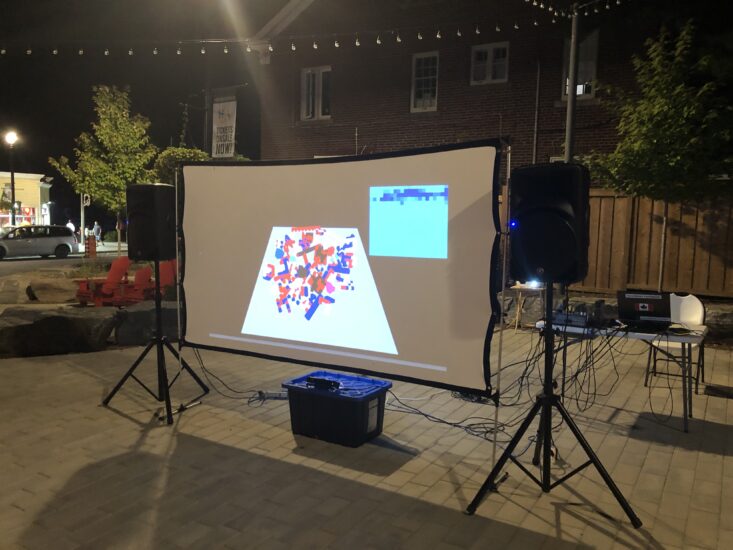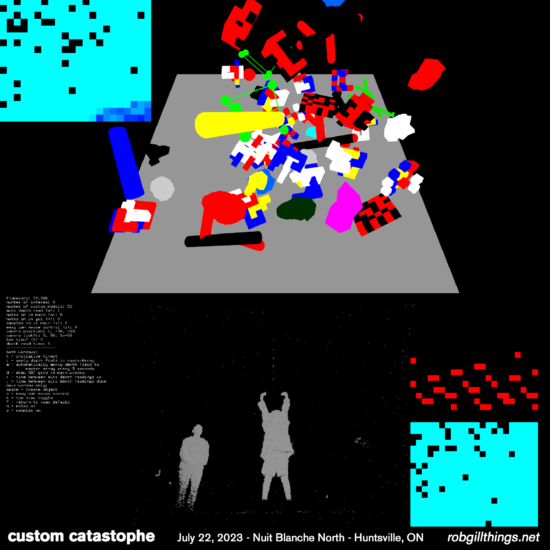making piles of things
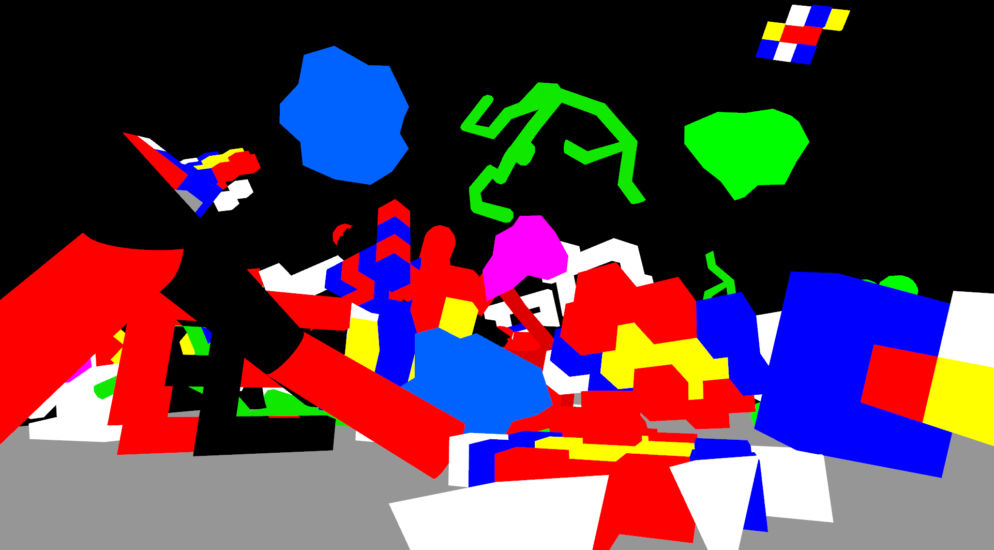
This installation was presented at Nuit Blanche North 2023 in downtown Huntsville, Ontario on July 22, 2023 – click here to go to event page
summary videos
blob shop
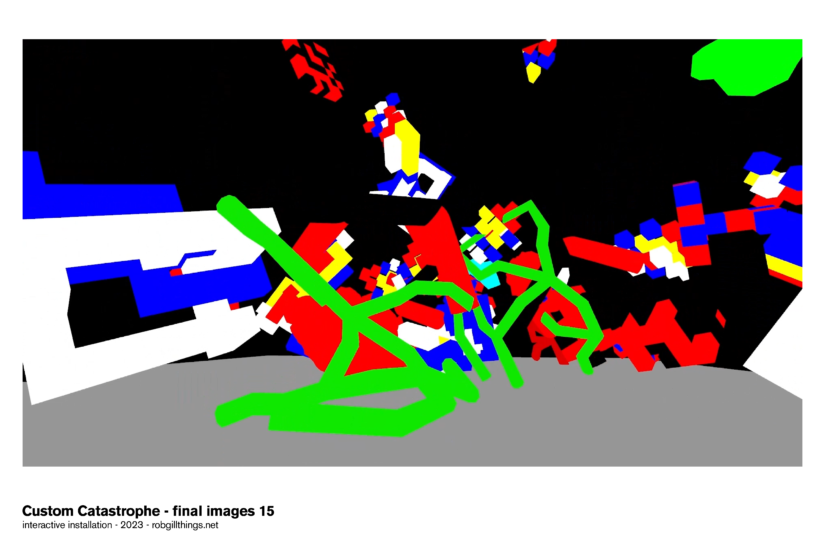
incredible sandwich blaster
Well here we are with yet another interactive installation from robgillthings.net. Yes and that’s nice and everything.
I built this installation using OpenFrameworks (an open-source media programming framework in C++), Blender for the 3D models, SuperCollider for sound, and a Kinect depth-of-field sensor for capturing participant’s movements.
This time I have finally put together a 3D environment. Participant’s distances from the sensor (which was located under the screen) determined the audio and visual activity. The closer people were to the screen, the crazier the objects would be – bursting into action in explosive increments.
The sensor captured the depth data (how close people were to it) and then that data was processed by a complex system based on the principles of self-organizing criticality. That is what you see in the teal box in the upper left-hand corner. The black dots jumping around are following a self-organizing system. This system is modelled on the ‘avalanche’ phenomenon and is most clearly demonstrated by a rice pile (as opposed to a sand pile). As more rice is added to the top, little avalanches occur at irregular and unpredictable intervals and it is within this activity that emergent phenomena can be observed. In this installation I have actually not programmed the complex system correctly but I like how this one works so far (nice and chaotic) so I am leaving it for now. This is something I will be exploring further in future work. This is certainly the avenue I have been trying to go down for a while now – dynamic systems, chaotic systems, non-linear dynamics, complex systems. I am not a mathematician though I am working on it because I think it is amazing.
I like to think of this layer of data translation through a complex system as the ‘score’ that is used to produce audio and visuals, though not a static score but one that still has limits and has a character or quality. It is this character that is the focus of the readings. The readings are the images, videos, prints, paintings, and audio tracks that you will find here on this page and the links within it. This installation is very much like an oracle machine, or Bingo, or rolling dice. I suggest that it is how the dice are being rolled that contains a quality that only living beings could impart – living presence and the character it embodies. It is this quality that interests me and what it can say about the inner worlds of psyche.
This is all very much about exploring the inner worlds.
audio album
I created ten different ‘sets’ of audio material that could be played through the software. Click the image to go to the Bandcamp page.
rooted in physical gesture
The human interaction, the people that show up in the sensor’s field, are feeding the system with data generated by physical human presence and movements so this entire process is rooted in pure physical gesture. It is these gestures that are then translated and transformed to possibly reveal some of the hidden qualities and character within them. This is all highly speculative I realize – it is within the visionary domain, but it is through this made up process that genuine meaning can be found.
The process is: gesture data -> complex system -> audio/visual display. The gesture data is fed into a complex system which then produces an audio and visual output as animation and sounds. From this material you have your answers – the ‘readings’. What do they mean? I think the answer to this will become clearer as this project progresses, though I will always say: the results are meant to be understood and approached in the way that art is – very much working under the surface – beyond language – a deep indescribable knowing. You don’t know how you know but you know you know. I have also started doing research on ‘transpersonal psychology’ and in particular, near death experiences (NDEs). The testimony is quite remarkable, and describes an extremely vivid world ‘beyond the veil’ and beyond the physical. Most of of the NDEs begin with the person leaving their body, floating up to the ceiling and looking down upon themselves in a coma, unconscious, or clinically dead!. It is through these experiences that we can obtain some crucial insights to the difficult problem of consciousness that mainstream science has yet to provide a satisfying explanation for.
I also like to take the resulting data produced by the system and translate it through more processes (you could say filters) of my own design, thereby revealing different aspects of the psychic material. You will find some early attempts in the NB project with displays like RGB, sensors, knot, and trees. Again, the results are considered as audio and visual art and are meant to be understood in that way.
It starts as just a thought out of nothingness. Its all imaginary, its all made up.
From the complex system, the data is then used to determine what forces are applied to the various onscreen objects. So the players are the participants and the score is the complex system that the data is fed into. The instrument is the empty field with objects bouncing around inside of it.
Yes this is all very hocus-pocus (but in some ways not) but I like that. As an artist, I get to do that.
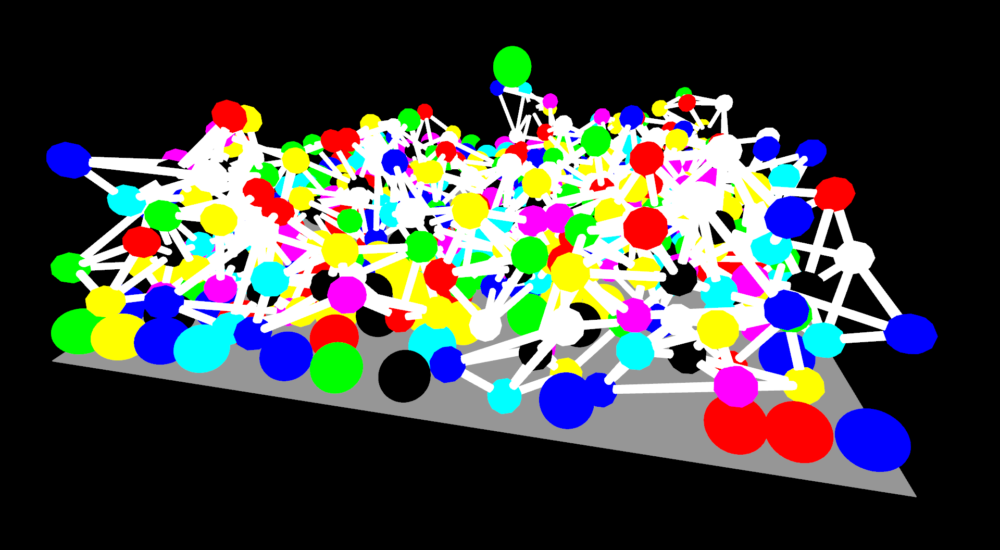
tracing the development of the project
The series of links/images below will lead you to details regarding the stages of progression that this project went through over the course of the six months that it took to develop.
The videos and images are the final artworks – what I refer to as ‘readings’. A few have been chosen to be saleable artworks – either as inexpensive prints or large scale acrylic paintings. Click here for more details.
01 – white background
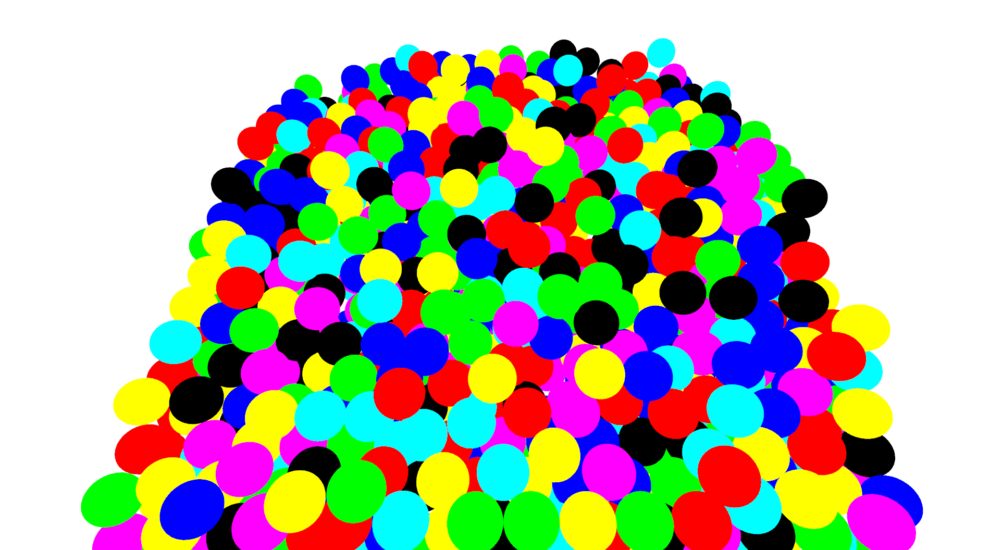
02 – preliminary objects
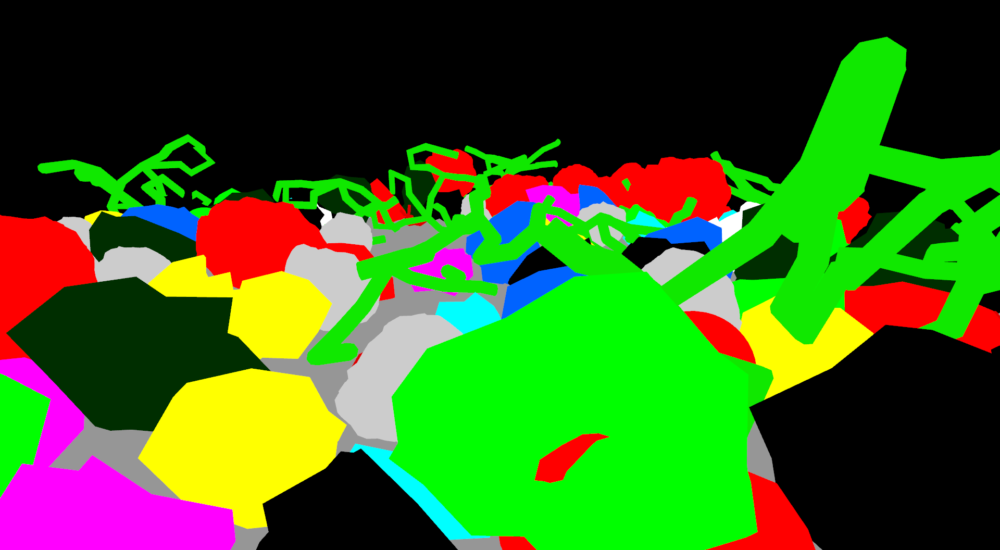
03 – added sensor
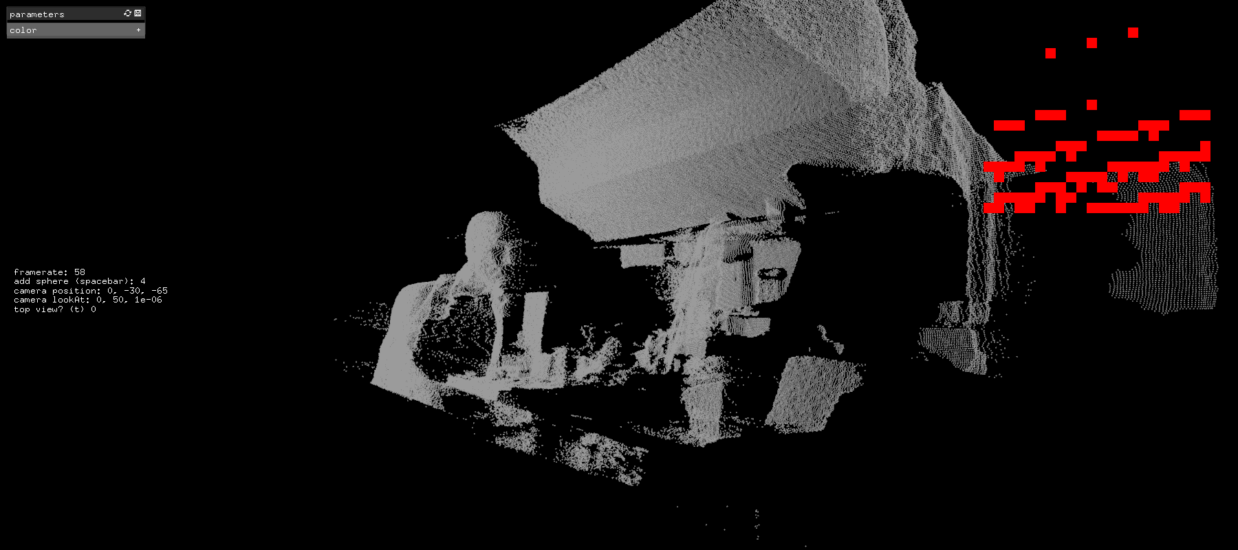
04 – NBN2023 event
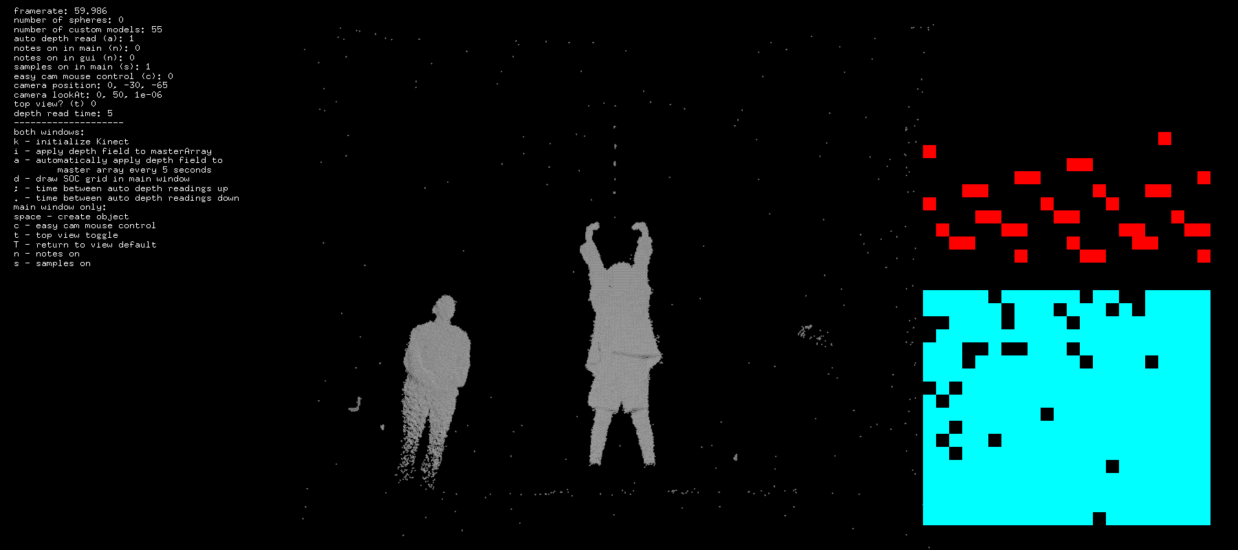
05 – final images and videos
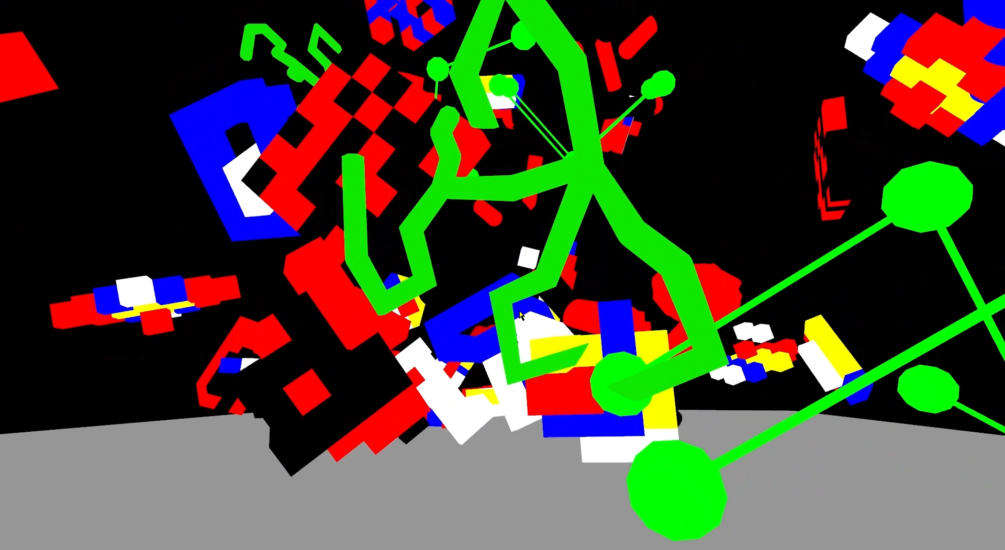
C++, OF, and Kinect: about the tools used
I am pretty proud of this one. Up until now, I have been using Processing/Java/Eclipse to write software for the interactive installations that I have previously presented. With this project, I took that final leap into OpenFrameworks (OF) and C++. I have always always wanted to learn C++ knowing that it is the most powerful and fastest general purpose language available worldwide. It is also, of course, the most difficult to learn and most complex. It has always been what I consider to be the ‘granddaddy’ of computer languages. It is an incredible language – the classic and quintessential programming language. It embodies what it is that is so great about computer programming. I was always intimidated (and for good reason) but after many months of reading and studying, I went for it with this project. I was shocked when I did, as it was not nearly as difficult as I had imagined. I was also not disappointed in any way whatsoever by the performance and power – amazing. I would say, broadly speaking, that it is 20x faster than my previous set of tools mentioned above. I can, however, guarantee that it is a lot faster than that though; next stop: shaders.
I once heard someone remark that one of the great things about C++ is that if you want to do something, anything, you will be able to do it in C++. I certainly cannot say this about Java. For example, I struggled for years to get a decent, usable second screen going (as a control panel) and I sort of got it working but not very well and eventually I just gave up on it as it was too much of a hassle. With OF and C++ though – nailed it right away – it works perfectly, and it works fast.
In addition to this being my first C++ project, this was also the first time I used OpenFrameworks. OpenFrameworks is an open source and free framework developed to assist in the creation of audio/visual/animation/interactive artwork for media artists such as myself. Its like the advanced version of Processing and there is very little documentation. You have to use your familiarity with code, the example applications (of which there are many that cover most aspects), and the forums to get by. The training wheels were definitely off. And just because I really love torturing myself, I took on the use of the Kinect depth-of-field sensor for the first time as well.
For six months I was in a constant state of serious unease. I had no idea if I could pull this off at all, but as the weeks went by, I was able to successfully put one piece in place after another. I had to use the forums a couple of times but the people there were just incredibly helpful and generous and they were instrumental in helping me solve the various problems I encountered.
I still had some important coding to do right up until the night before and the question of whether I could pull this off was still there and, of course, as if to test my sanity, the program started crashing while running, which it had not done up until then. This was the night before and even the morning of. Of course – I couldn’t possibly complete a project without some last minute gut-wrenching panic.
…It turned out to be okay however. If I used the software in a certain way, it would not crash and I was able to employ the program’s full functionality throughout the event. The program did not crash once and people were genuinely engaged. I get into more details of the event here. The software was fast and robust (as in it performed the same each time I ran it). After twelve years, I finally nailed a Nuit Blanche North show.
hypersnoz
